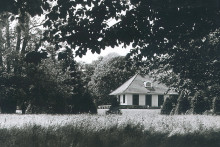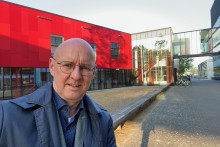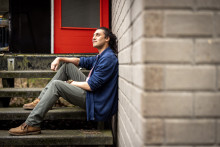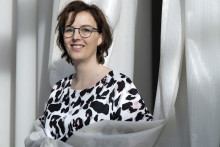TWO PARTS
On 4 and 5 May U-Today brings you a story about the history of the country estate of Drienerlo, which spans two-thirds of the current campus. Why? Because World War II was decisive for the fate of Drienerlo.
Yesterday, we published a story about the history of the estate and how it came into the hands of the Polytechnic University of Twente.
‘A somewhat peculiar gentleman-scholar, who never published anything and led a highly isolated existence despite holding public positions.’ This is what Enschede's former preacher Bekkenkamp wrote about Gerrit Albertus Lasonder (1882-1944). From 1913 to 1919, Lasonder was a member of the Provincial Council of Overijssel (a position also held by his grandfather and father) and alderman of Education of Enschede for the Liberal State Party. However, he apparently did not show himself often in public.
Perhaps this was because he was under his mother's thumb. Father Laurens Lasonder, a wealthy landowner, had died just before Gerrit Albertus' eighteenth birthday. His mother Geertruida Aleida Elderink had a great deal of influence on the life of her only child until her death in 1938. While attending law school in Groningen in 1904, Gerrit Albertus was not allowed to live in student rooms. Instead he commuted for three hours each way every day. Even during his doctorate, on a constitutional subject, he continued to live with his mother in their city villa on the Marktstraat in Enschede (the building which housed De Slegte until last year).
In 1913, he became engaged to Anne Christine Bauer, ten years his junior and the German daughter of a former Dutch manufacturer from Gildehaus. Gerrit Albertus' mother did not accept the notion of their marriage, which took place in 1941, three years after her death and 28 years after their engagement. By then Lasonder had inherited several million guilders from his parents along with a dozen farms in Usselo and three on the country estate of Drienerlo, which he leased to farmers.
Fear of communism
In the 1930s, Lasonder developed into a committed member of the Dutch National Socialist Movement (NSB). In his eyes, communism posed a great threat to civilization, and only Hitler could reverse that danger. In his villa on the Marktstraat, he organized political meetings and secret gatherings, initially encouraged by his friend and textile baron Jan van Heek. NSB leaders Anton Mussert and Cornelis van Geelkerken visited Lasonder, among others.
During the war, Lasonder became a member of the Germanic SS and the Dutch NVD. He also welcomed his NSB friends to his country manor, a summer house on the country estate of Drienerlo which was demolished in the sixties but was located near the current Carillon. Germans were quartered there as well as in the Scholten family farmhouse, the building that now houses the Faculty Club.
Lasonder did not witness the end of the war. He died on 4 December 1944 of kidney poisoning. His wife inherited his land and property, but that property was expropriated after the war (pages 8-9). In 1969 the Lasonders’ name was restored, owing mainly to the dedication of the Enschede pastor Leendert Overduin to the rehabilitation. Lasonder, it appeared, had offered refuge on campus not only to Germans, but also to Jews. When the pastor was looking for a hiding place for Jews, he often turned to the NSB farmers who leased from Lasonder. ‘Lasonder knew. He could have turned me in along with many others if he wanted to. But he didn’t,' stated Overduin.
This article was previously published in UT Nieuws Magazine May 2015 (you can also find an extensive citation overview here).







